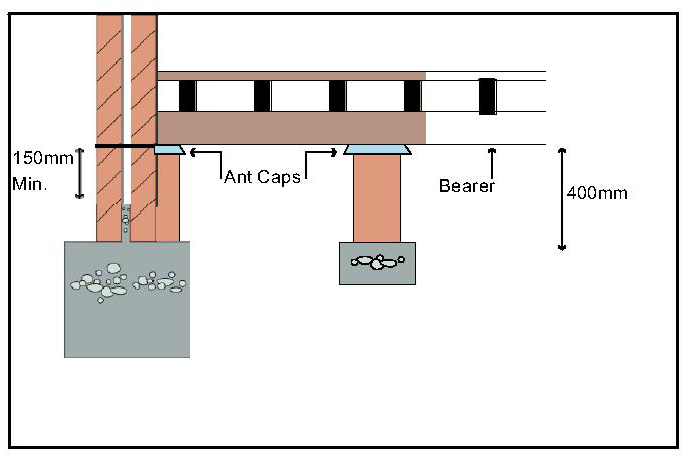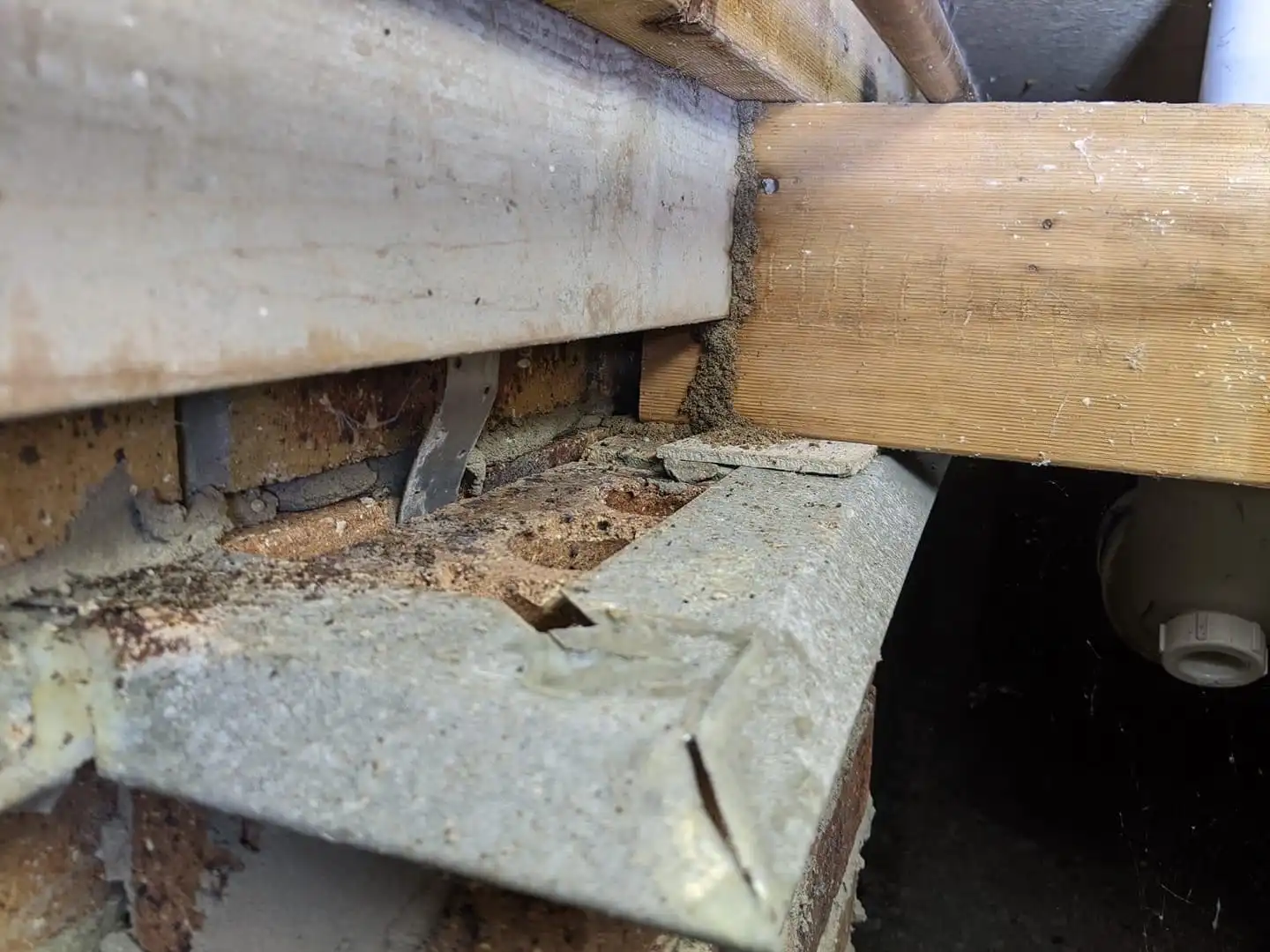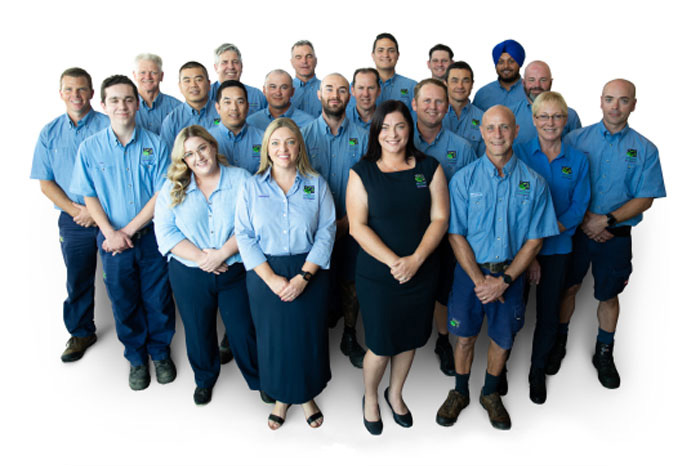Antcaps don’t stop termites!
Ant caps are a point of detection, not a deterrence. Termite shields, or ant caps, are tin sheets that force termites to emerge from concealed entry points, making them easier to detect.
Ant capping, or the correct term - termite shields (the terms are used interchangeably), is a very common construction method in Queensland homes. Depending on the foundation type, it is a requirement under the Australian Building Code.
Houses built on timber stumps need ant capping
Ant caps proved incredibly useful in preventing termites moving undetected through timber piers. These shields have saved many a Queensland home from massive termite infestation.
Having said that, they do not provide homeowners with a ‘set and forget’ solution for termite prevention. Termite shielding (you can see an example of ant caps in the diagram below) is not, in fact, a termite deterrent at all. As they are made from materials termites cannot eat through, they are forced to build mudding trails to get around the barrier and into the timber. This allows us to see evidence of their presence before they can do much damage.

Obviously, this is only possible if the ant caps are checked as part of your regular termite inspection/check. This is especially important if you have subfloors, as homeowners tend to stay out of them wherever possible {who can blame you? Dark-check. Dusty-check. Spiders? Not going to happen}, so they are easily forgotten. However, a professional Pest Management Technician knows precisely what to check for.
Conquer Termites Northside dealt with this issue just the other day. Ant caps had been placed upon Timber Piers under a home in Paddington. Homes like these (built on stumps) need Ant Caps because termites have undetected access to your house without them.
Unfortunately, Termite Shields can give homeowners a false sense of security, particularly if the home is older. It was common practice to nail the caps on the pier during construction to keep them on before the timber bearer was placed on top. This isn’t problematic until years later when nail and cap rust, leaving a sizable (and termite-accessible) hole under the bearers.

Termite entry through a hole in the middle of the ant cap
This Paddington home is one such home, and it had termites in the living room walls. At first glance, it wasn’t clear where they were getting in. Of course, we checked the ant caps, but even then - it wasn’t immediately apparent. As you can see from the photo, there is a substantial hole in this pier, but hidden under the bearer - nearly invisible unless you are specifically looking for it - there wasn’t even any of the usual mudding to tip us off.
Another example of the benefit of a qualified, professional Pest Management Team with a trained eye, plenty of experience dealing with termites in South East Queensland, and regular, yearly Pest Inspections. Those inspections can be the key to keeping your biggest investment safe.




